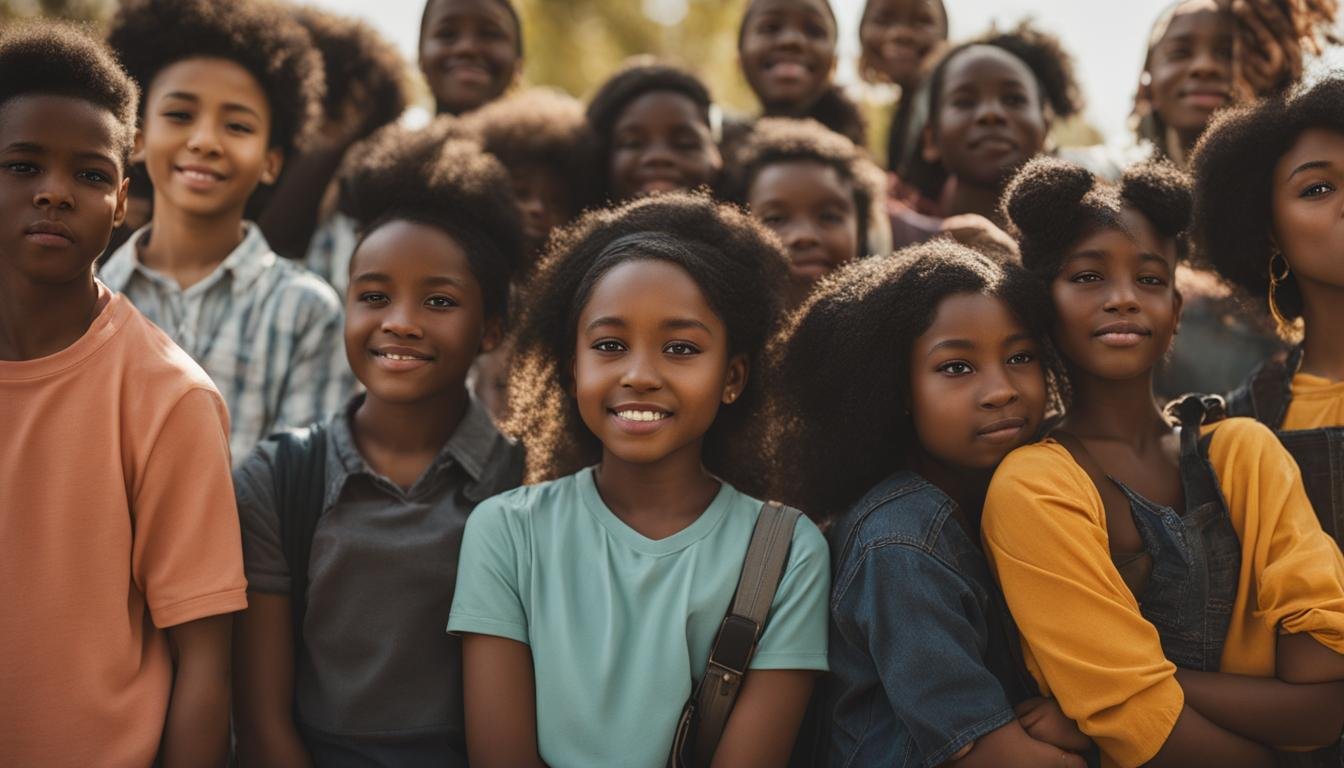How does colorism affect students?
Have you ever considered the impact of colorism on students in our education system? Colorism, the prejudicial or preferential treatment of same-race people based solely on their color, has far-reaching effects that go beyond the surface. It affects students of color in various ways, creating disparities and inequalities that hinder their educational journey.
A study revealed that students with lighter skin tones are often perceived and treated more favorably than their darker-skinned peers. This discrepancy can lead to consequences such as unfair disciplinary actions, limited access to advanced courses, and lower academic achievement. The effects of colorism also extend to interpersonal interactions, causing bullying, harassment, and diminished self-esteem among students.
Intrigued? Let’s delve deeper into the impact of colorism in the classroom, explore strategies for addressing this issue, and shed light on the importance of creating an inclusive and equitable education system where all students can thrive.
Key Takeaways:
- Colorism, the prejudicial or preferential treatment of people based on their skin color, significantly affects students in the education system.
- Students with lighter skin tones may receive preferential treatment, leading to disparities in discipline, course selection, and academic achievement.
- Colorism can result in bullying, harassment, and low self-esteem among students.
- Educators play a crucial role in addressing colorism by implementing strategies such as targeted counseling, mentorship programs, and culturally relevant curriculum.
- A responsive approach to discipline can help challenge colorism biases and create a more inclusive learning environment.
The Impact of Colorism in the Classroom
Colorism doesn’t just affect students’ personal lives; it also has a profound impact on their experiences and achievements in the classroom. Teachers and educators may unknowingly hold implicit biases regarding skin tone, which can directly influence the quality of education certain students receive. This perpetuates disparities and inequalities, creating barriers to education and student success.
Students with darker skin tones often face unfair disciplinary action, such as harsher punishments or being disproportionately targeted for behavioral issues. This can create a hostile learning environment and undermine their confidence and motivation. Moreover, colorism can discourage students from pursuing advanced courses or participating in extracurricular activities, limiting their academic and personal growth.
“I was told I wasn’t ‘smart enough’ for the honors program because of my skin color. It made me question my abilities and didn’t give me a fair chance to prove myself.” – Taylor Johnson, former high school student
Additionally, colorism within the student body can manifest in the form of bullying and negative social interactions. Students with darker skin tones may become targets of derogatory comments, exclusion, or even physical violence, leading to feelings of isolation, low self-esteem, and decreased academic engagement.
Addressing Colorism Through Awareness and Intervention
Recognizing and addressing colorism in the classroom is crucial to creating a more inclusive and equitable learning environment. Educators can start by cultivating awareness of colorism and its impact on student achievement through professional development programs, workshops, and discussions.
- Implementing anti-bullying policies and fostering a culture of empathy and respect can help combat colorism within the student body.
- Providing diversity and inclusion training for teachers can help them recognize and challenge their own biases, ensuring fair treatment of all students.
- Integrating diverse perspectives and experiences into the curriculum can empower students of all skin tones and promote a sense of belonging.
- Creating safe spaces for open dialogue can encourage students to share their experiences and confront colorist attitudes.
By actively addressing colorism, schools can foster an environment where all students feel valued, supported, and empowered to reach their full potential.
The Importance of Cultivating Positive School Climate
A positive school climate is vital for mitigating the impact of colorism and promoting student achievement. Establishing a culture of inclusivity and respect not only combats colorist attitudes but also enhances overall academic performance and well-being.
“When I started feeling accepted and celebrated for who I am, my confidence soared, and I excelled academically. It made a tremendous difference in my life.” – Jasmine Nguyen, high school graduate
Strategies to cultivate a positive school climate include:
- Encouraging student-led initiatives that promote diversity, inclusion, and equity.
- Providing mentorship programs and support networks that foster relationships between students and adults. This can help students navigate the challenges they face due to colorism.
- Creating opportunities for student voices to be heard and integrated into decision-making processes.
- Regularly assessing school climate through surveys and feedback mechanisms to identify areas for improvement.
- Collaborating with community organizations and advocates to strengthen efforts in addressing colorism.
By actively working towards a positive school climate, educators can support the holistic development of students and dismantle the harmful effects of colorism within educational institutions.
Strategies for Addressing Colorism in Education
Addressing colorism in the education system is essential to create an inclusive and equitable learning environment for all students. By implementing effective strategies, educators can challenge colorism biases and support students in overcoming the challenges it presents.
-
Addressing Colorist Incidents
When colorist incidents occur, it is crucial to treat them as teachable moments. Educators can use these opportunities to educate students about colorism, its consequences, and the importance of respecting and valuing people of all skin tones. Counteract negative messaging by promoting positive representation and celebrating diversity.
-
Targeted Counseling and Mentorship Programs
Students who experience the negative effects of colorism, such as low self-esteem or depression, can benefit from targeted counseling and mentorship programs. By providing a safe space for students to express their feelings and concerns, these programs can help them develop resilience and a positive sense of self.
-
Culturally Relevant Curriculum and Programming
Schools can adopt culturally relevant curriculum, pedagogy, and programming that acknowledges and affirms students of all races, ethnicities, and skin tones. By incorporating diverse perspectives and experiences into the curriculum, educators can create a more inclusive learning environment that validates and empowers students.
-
Responsive Discipline Models
Shifting from a punitive discipline model to a responsive approach is crucial in addressing colorism biases in school discipline. Integrating mentorship, counseling, and restorative justice practices can help foster understanding, empathy, and personal growth among students involved in disciplinary incidents, reducing the perpetuation of colorist stereotypes.

(table starts here)
| Strategies | Benefits |
|---|---|
| Addressing Colorist Incidents | – Promotes dialogue and education – Counters negative messaging – Encourages respect and valuing of diversity |
| Targeted Counseling and Mentorship Programs | – Supports students’ emotional well-being – Builds resilience and self-esteem – Provides guidance and support |
| Culturally Relevant Curriculum and Programming | – Validates and empowers students – Fosters inclusivity and belonging – Recognizes diverse perspectives |
| Responsive Discipline Models | – Promotes understanding and personal growth – Reduces perpetuation of stereotypes – Fosters restorative justice practices |
(table ends here)
By utilizing these strategies, educators can actively work towards eliminating colorism challenges for students and minimizing its consequences. Creating an environment that is sensitive to the impacts of colorism will not only support academic success but also promote overall student well-being.
Conclusion
Colorism in the education system has profound consequences for students, perpetuating disparities and inequalities that impact their academic achievement, sense of belonging, and overall well-being. It is imperative that we recognize and address colorism within schools to create an inclusive and equitable learning environment.
By implementing various strategies, such as targeted counseling and mentorship programs, offering culturally relevant curriculum, and adopting responsive discipline models, educators can challenge colorism biases and support students throughout their educational journey.
Continued research and discussions on colorism are essential for developing effective interventions and promoting a more just and inclusive education system. Together, we can work towards dismantling colorist practices and ensuring that all students, regardless of their skin tone, have equal opportunities for success.






